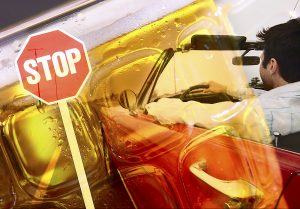
December is National Impaired Driving Prevention Month
The National Highway Traffic Safety Administration (NHTSA), within the U.S. Department of Transportation, with the White House’s Office of National Drug Control Policy (ONDCP), and the U.S. Department of Health and Human Service’s Substance Abuse and Mental Health Services Administration remind you to celebrate safely this holiday season. We stand with all those who have known the tragic consequences of drugged or drunk driving, and we rededicate ourselves to preventing it this December and throughout the year.
President Obama has designated December 2012 as National Impaired Driving Prevention Month and invites families, educators, health care providers, and community leaders to promote responsible decision-making and encourage young people to live free of drugs and alcohol.
Impaired driving includes distracted driving, drugged driving, and drunk driving.
Why do we recognize National Impaired Driving Prevention Month?
In an average year, 30 million Americans drive drunk, and 10 million Americans drive impaired by illicit drugs.
A 2010 survey by the Substance Abuse and Mental Health Services Administration (SAMHSA) revealed that 13.2 percent of all people aged 16 or older drove under the influence of alcohol and 4.3 percent drove under the influence of illicit drugs during the past year.1
Furthermore, rates of impaired driving differed dramatically by age.1
- While 11.8 percent of people aged 26 and older drove drunk, 19.5 percent of people aged 16 to 25 drove drunk.
- And, 2.8 percent of the older group drove drugged, while 11.4 percent of younger drivers did so.1
December seems particularly suited to this observation because traffic fatalities that involve impaired drivers increase significantly during the Christmas and New Year’s holiday periods.2
- On average, 25 people were killed in alcohol-impaired driving crashes per day during December 2010.
- Young adults are among those at greatest risk for driving impaired. During December 2010, drivers 21 to 34 years old were alcohol impaired and involved in fatal crashes at a higher percentage than any other age group.
All 50 States and the District of Columbia enforce the minimum legal drinking age of 21 years. NHTSA asks minors to avoid alcohol, and encourages parents and other caregivers to make a new or renewed commitment to never cater a party to underage drinking. If someone you know is drinking, do not let that person get behind the wheel. If you see an impaired driver on the road, contact law enforcement. Your actions may save someone’s life, and inaction could cost a life. Families play an essential part in stopping impaired driving. By talking about the risks and setting clear expectations, parents and other caregivers can help their children stay safe, sober, and focused on the road.
For more information:
- Read the President’s 2012 proclamation here.
- NHSTA’s Stop Impaired Driving website provides information to help you stop impaired driving in your community.
